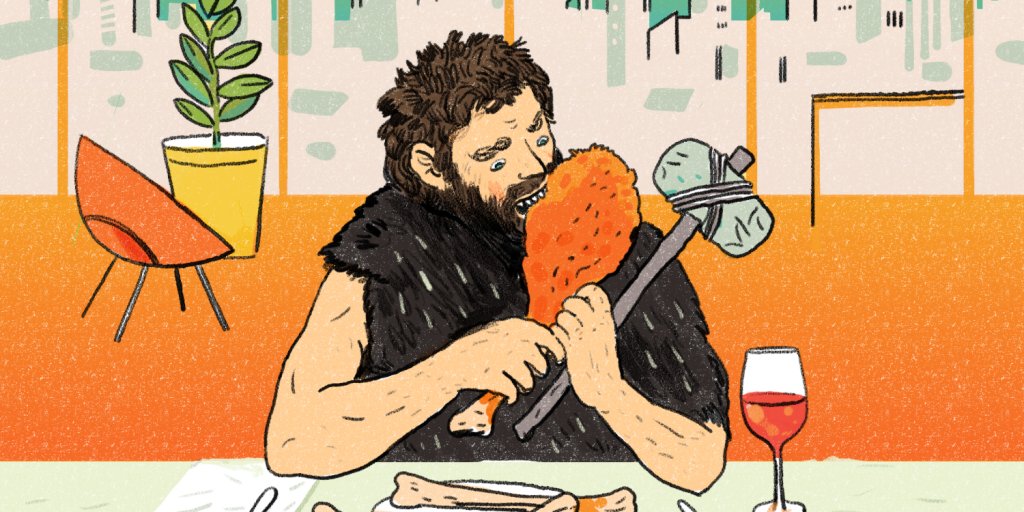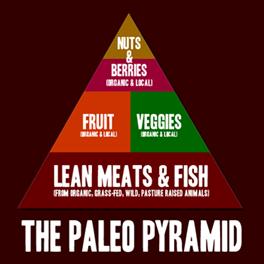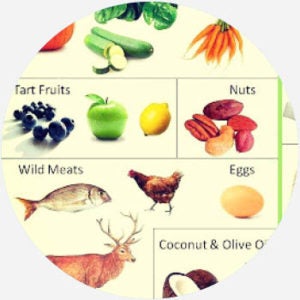
You may be wondering "Who created Paleo?" American scientist, Dr. Loren Cordain, is the person who came up with the Paleo diet. Among other things, he is one of the most prominent advocates of the Paleo diet. Which one of these men should we believe? Or is it just another myth? Continue reading to learn more about this amazing diet!
Dr. Loren Cordain
Paleo, a controversial lifestyle plan, encourages you to eat foods your hunter-gatherer forefathers ate millions of year ago. This diet was based on research that looked at the Stone Age diet. It was low in salt, but high in potassium. High salt intake has been linked to many modern illnesses. Dr. Cordain states that it is possible to avoid many illnesses by eating like our caveman forefathers.
In the world of nutrition and human evolution, Dr. Cordain has published numerous scientific articles and has become one of the most well-known authorities on the subject. His research has been featured across a variety of media outlets, including Dateline NBC (New York Times front page) and The New York Times. He has written three books on the subject as well as a newsletter. See the following resources to learn more about Paleo.
The Paleo Diet has three levels: advanced, intermediate, or basic. The lowest level allows for fewer "open meals" and allows for more foods that we are not allowed to eat. It is possible to eat legumes or other seeds, but you must be careful. A week can include 20 meals and 20 snack options. If you want to live long, healthy lives, the diet is recommended.

This diet is based upon the assumption that high protein intakes are reflected in hunter-gatherers. Cordain points out research supporting his theory, using an ethnographic analysis of 229 hunter–gatherer society. According to his research, 73% of them got more than 50% of their energy from animal foods and only 14 percent ate plants. Cordain was however refuted by Katherine Milton. J. Clin. Nutr. 71:665-667.
Although Dr. Cordain's hypothesis may sound appealing, there are many strong counterarguments. Cordain suggests that a diet low carbohydrate and fat can increase one's chance of developing cancer. However the evidence disproves this assertion. For example, the diet's health benefits outweigh any potential drawbacks. Cordain's analysis also points out the limitations of the diet, although it is still in its infancy.
Walter Voegtlin
Paleolithic eating is a way to eat that has been around for at least 35 years. Walter Voegtlin was a gastroenterologist who created the Stone Age Diet. He studied man's diet and ecology. His study found that the diet was beneficial for people with common digestive problems. There are many health benefits to the diet, including improved brain function as well as a lower chance of developing colon cancer.
Voegtlin was inspired to create the diet based on the fact that humans were born as carnivores. He believed that humans are genetically similar to dogs and sheep, and should therefore eat a carnivorous diet. The diet advocates point to modern data, which is mixed, but generally positive. However, modern humans have not adapted to the paleo-diet as much as animals did tens of thousands years ago.
Walter Voegtlin used the chemistry of foods to show the effectiveness of his diet in "The Real Diet of Man". This book also features low glycemic food, high fiber and balanced essential oil acids. The book focuses only on foods that can make your body work at its best. Ted Slanker, Walter Voegtlin and other authors have been covering the basics of nutrition research for more than fifteen years. They also distill complex studies into basic nutrients for human well-being.

Some food groups are off limits on the Paleo diet, including processed foods, sugar, salt, and grains. Because they are grain-fed, some animals are not suitable. In addition, modern fruits & vegetables are much different than the ones eaten during paleolithic eras. Many Paleo dieters cite studies with a limited number of subjects that are not long-term. These studies do not support the Paleo diet in its entirety.
Since the Paleolithic diet is based on animal protein, a study of animals' diets is necessary. While Paleolithic diets did not include vegetarian foods, they still have an influence on modern people. Many of these researchers believe animal diets were not completely vegetarian or vegan. It is possible to improve your cardiovascular health by eating more meat, fat, and other animal products.
FAQ
Is there a difference between a chef and a cook?
A chef cooks for others. A cook prepares food for himself or herself. While both jobs involve the preparation of food, a chef interacts directly with his customers. They may need to make decisions about what they will serve to their guests based upon their preferences. A cook does not interact with customers. He or she makes sure that the food is delicious before serving it.
How can you get motivated to cook well?
It's fun to cook for your friends and family. Cooking for your own family is much easier than making meals for others. If you want to be motivated to cook, try making something new. This will allow you to discover new recipes and techniques. It's also possible to use recipes from other cultures in order to broaden your culinary knowledge.
How Much Does it Cost to Learn Culinary Arts Skills?
The price of studying culinary arts varies widely. A four-year degree in culinary arts typically costs around $40,000. A two-year associate's level degree can cost less than $5,000. Tuition rates vary depending on what program you choose. The prices charged by private institutions are generally higher than the public.
What are the Qualifications to be a Chef
To become a chef, you must have a bachelor's degree in culinary arts. In addition, you need to pass a series of tests administered by the ACF. After you have completed all requirements, you will receive a certificate confirming your qualifications.
What skills are required to enter a culinary school?
You must have the ability to cook well and work under pressure. Cooking classes can be taken at high schools and community colleges to learn the basics of cooking. Once you have learned the basics of cooking, it is time to look for work at a restaurant.
Which is the best way for you to learn how to cook?
Cooking is a skill that every person should learn. You'll miss out on delicious meals if your skills are not up to par. You must start by finding a recipe you enjoy and following it closely when you learn to cook. You'll then want to practice small adjustments until you feel confident making the dish. Finally, try cooking for others. This will help you improve at cooking and also allow you to test your skills.
Statistics
- In the United States, the category is estimated at $23.2 billion annually and is growing faster than the market. (washingtonpost.com)
- You'll be amazed that over 90% of CIA students receive scholarships and grants to finish their culinary studies. (ischoolconnect.com)
- under 10 Kids have been taught that there is special food just for them, and Fiese says that 10 percent of kids will throw a tantrum if they don't get the food they want. (washingtonpost.com)
External Links
How To
How to make a perfect eggroll
Omelets are a favorite breakfast food of mine. But how do you make them perfectly? There are many recipes and methods I tried, but none worked. Today, I'd like to share some tips with you in order to make delicious and fluffy omelets every day.
First, eggs can be very temperamental ingredients for making omelets. They must be fresh, preferably from the organic market, and be kept cold until cooking. The yolks and whites will not form properly if they aren't kept cold enough. This will make your omelets appear strangely colored. If you intend to cook your eggs immediately, it's best to use room-temperature egg.
Another tip is to separate the egg before adding it to the pan. You don't want the white to get mixed with the yolk, as this could cause the egg to curdle.
The bottom part of an egg that is added directly to the stovetop might be burned, which could cause a ruined texture in your omelet. Instead, place the egg in the microwave for 10 second before you put it in the skillet. The microwave heat will cook the egg just right without making it too hot.
Next, let's talk about mixing the eggs. When mixing eggs, it is important to thoroughly beat them. You need to turn the bowl of the mixer upside down. Now shake the bowl vigorously. By doing this, the egg is thoroughly mixed with the air in the bowl.
The fun part is now - adding the milk to the mixture. Fold the eggs in the milk mixture by first pouring half of it into the egg whites. Do not be alarmed if there are still egg streaks visible. Once the omelet flips, these streaks will disappear.
After folding the eggs fold the pan onto medium heat. When the oil starts to hot, wait for the pan to cook. Once the oil begins to heat, add 1/4 cup butter and swirl the pan to coat it. Next, carefully open the lid and sprinkle salt into your pan. Salt will prevent the omelet sticking to the pan.
Once the omelet has formed completely, cover the pan and let it set for a few minutes. Flip the omelet with a spatula, or flip it upside down. Cook the other side for another minute or two. Serve immediately after removing the omelet from its pan.
This recipe works best with whole milk, but skimmed milk also works.